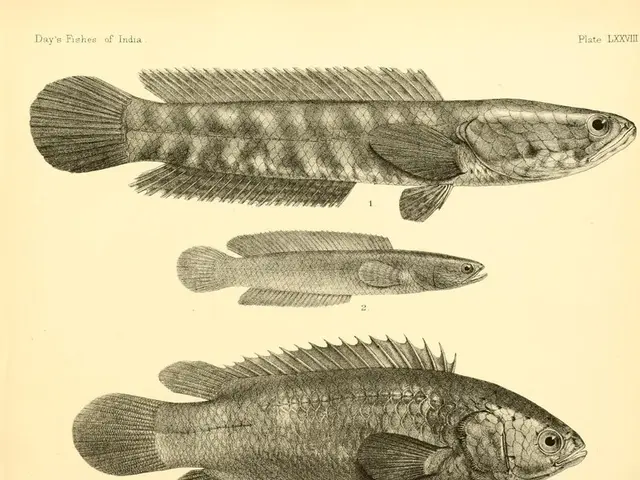Therapeutic Approach Modification: Objective, Illustrations, and Debate
Rewritten Article:
Gotta hate those bad habits, huh? Aversion Therapy (AT) is a behavior-modifying technique that tries to nip 'em in the bud by linking 'em up with something rotten. Folks often get this treatment for behaviors tied to addictions, like smoking or boozing it up. But us spry speed-talkers aren't about quibbling over lingo – we'll call it AT from here on out.
Affectionately referred to as "aversive conditioning" or "deterrent therapy," AT brings unwanted behaviors and unpleasant consequences together for a lesson they won't soon forget. But is it as effective as they claim, and do we gotta worry about potential ethics violations? Let's find out!
Hey, Uncle Alcohol! (Or, Brewskis Ain't So Welcoming After All)
Remember that time at the bar when you chugged down a pint, and suddenly you were heaving your guts out? Well, that's pretty much how AT works for alcohol use disorder (AUD). In a procedure called emetic counter conditioning (ECC), folks ingest some nasty meds that make them puke, followed by knocking back the hooch they're trying to beat. Eventually, your brain starts to associate alcohol with the dread of vomiting and, hopefully, cuts down on the drinking.
But, you know, life ain't always easy. Is this therapy all it's cracked up to be? You may have heard about some controversial aspects, and we'll dive into that next.
Does Aversion Therapy Do the Job?
Despite what some might say, AT can help slash addictive behaviors in the short run. However, hold your horses, champ – the long haul still raises questions about its overall effectiveness.
A small study published in 2017 analyzed the impact of ECC on folks with AUD. In five sessions, participants took meds to puke and swilled booze. Three months and 9 months later, participants reported avoiding the drink, and more than half were still sober a year later! Brain scans before and after the treatment showed significant reductions in craving-related activity. So, it looks promising, but research is still underway to determine if these changes are long-lasting.
Now, let's take a look at other addiction-related behaviors, such as smoking and chomping on those eats you shouldn't. Well, the jury's still out on that, but AT doesn't seem to be a slam-dunk solution.
Tricky Business: The Ethics of Aversion Therapy
Some mental health professionals reckon AT is a no-go zone because it involves administering a yucky stimulus that could cause psychological or physical pain or discomfort. Yikes! Like when some docs tried "conversion therapy" to "fix" homosexuality back in the day. Whew, dodged a bullet there, didn't we? Thankfully, that's a thing of the past.
But what about the use of AT for addiction-related behaviors? Some mental health experts find it problematic because it brings a dose of hurt to help people change. So, tread carefully when considering this treatment option.
Whew, with all this info behind us, it's clear that AT has come a long way, but it still faces some hurdles. As research moves forward, we may see a shift towards kinder, gentler treatments. Until then, just remember: Change takes time, patience, and the courage to hang in there.
Enrichment Data:
Overall:
Current State of Research and Controversy
Aversion therapy, also known as aversive conditioning or deterrent therapy, is a behavioral treatment that aims to reduce undesirable behaviors by associating them with unpleasant stimuli. It has been used in treating addiction-related behaviors like smoking and alcohol use disorder (AUD). However, the therapy faces significant controversy and questions regarding its long-term effectiveness.
Research
- Effectiveness in Substance Use Disorders: Research indicates that aversion therapy may be less effective for some addiction-related behaviors, such as smoking and overeating. For AUD, treatments like emetic counterconditioning involve inducing nausea and vomiting while consuming alcohol to create an aversive association[1].
- Role of Disulfiram: Studies have shown the efficacy of disulfiram as an aversive agent in preventing alcohol reoccurrence. When used alongside non-pharmacological interventions, disulfiram helps patients resist cravings and maintain abstinence[5].
- Genetic Factors in Addiction: Recent research highlights the role of genetic factors, particularly mutations in the TAAR1 receptor, which influence aversion to drugs like methamphetamine[2]. Understanding these genetic components could lead to more targeted therapies.
Controversy
- Ethical Concerns: Many mental health professionals view aversion therapy as unethical due to its reliance on causing psychological distress or physical pain[1]. Critics argue that this approach may lead to temporary cessation of behavior but does not address underlying issues.
- Long-term Efficacy: Questions persist about the long-term success of aversion therapy in managing addiction-related behaviors. While some studies show positive outcomes with drugs like disulfiram, overall effectiveness remains a topic of debate.
- Alternative Treatments: The development of alternative therapies, such as Mindfulness-Oriented Recovery Enhancement (MORE), which focus on reorienting brain responses to pleasure, suggests a shift towards more holistic approaches to addiction treatment[4].
In summary, while aversion therapy is still used in treating addiction, it faces criticism due to ethical concerns and doubts about long-term effectiveness. As research continues to explore more comprehensive and humane treatments, the role of aversion therapy may evolve or diminish over time.
- Aversion Therapy (AT) is a technique that connects unwanted behaviors, like alcohol use disorder (AUD), with something unpleasant to prevent them.
- AT, also known as "aversive conditioning" or "deterrent therapy," has been questioned for its effectiveness in the long run.
- In the study published in 2017, people with AUD who underwent emetic counter conditioning (ECC) reported reduced drinking and were largely sober a year later.
- For addiction-related behaviors like smoking, the effectiveness of aversion therapy is still under debate.
- Some mental health professionals argue that aversion therapy is unethical because it involves intentionally causing psychological or physical discomfort.
- In 2022, the health-and-wellness industry is likely to explore kinder, gentler treatments for mental health disorders as research progresses.
- Science continues to look into alternative medicines and therapies-and-treatments, including Mindfulness-Oriented Recovery Enhancement (MORE), to address addiction more holistically.




